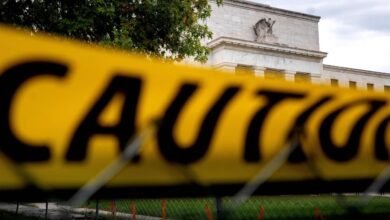
The nation’s $1.7 trillion in student debt is not spread equally.
That’s one takeaway from an analysis of government data released earlier this month zeroing in on the average student debt in each state.
Maryland tops the list with $43,116 of student debt per borrower, according to the analysis published by Degree Choices, a company that publishes college rankings and other higher education information. Rounding out the top ten are: Georgia, Virginia, Florida, South Carolina, Illinois, Delaware, North Carolina, Vermont and Hawaii. At the bottom of the list is North Dakota, with $30,000 per borrower, the analysis found.
It’s not uncommon for different organizations to publish these kinds of lists and Washington, D.C. and Maryland — which borders the nation’s capital — often wind up at or near the top. That’s in part because they tend to have relatively high levels of residents with at least a bachelor’s degree. In other rankings that emphasize metrics like student debt as a share of income, other states, like Pennsylvania, come out looking like one of the harder places for student-loan borrowers to live.
Regardless of the student debt picture, borrowers in all states do appear to be looking for ways to manage their student loans. According to the White House, borrowers in every congressional district signed up for SAVE, a repayment program the Biden administration announced earlier this year.
Nearly 5.5 million borrowers enrolled in SAVE, an option that builds on previous plans that allow borrowers to pay off their debt as a percentage of their income and have the remainder generally after at least 20 years of payments.
SAVE, the Biden administration’s version of income-driven repayment, protects more income from student loan payments than previous versions. So far, about 2.9 million borrowers have payments of $0 a month, officials said.
Source link





